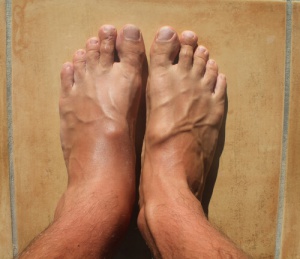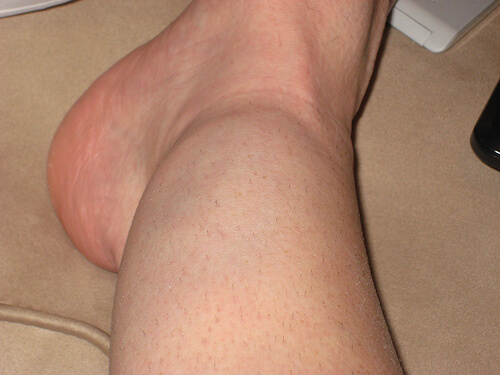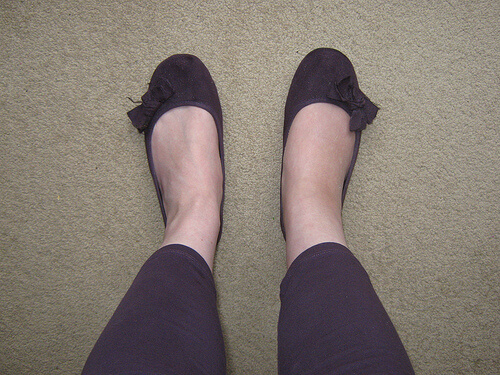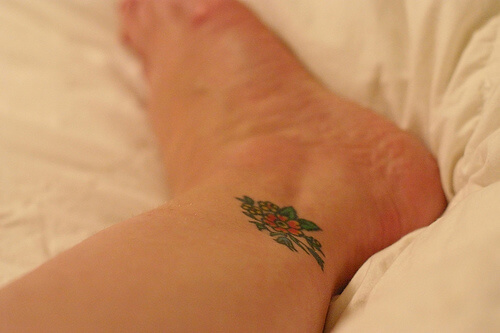How to Reduce Ankle Swelling

Ankles are very delicate and are made up of ligaments, bones, and muscles. Although they’re strong because they support most of your body weight, they’re very vulnerable to injuries and problems. One of these is ankle swelling, which can be caused by fluid retention, walking on uneven surfaces, wearing bad shoes, sprains, or cramps.
Ankle pain
Swelling may not always cause pain, but it’s still very uncomfortable. If you feel pain on the inside or outside of one or both ankles, it could be an obvious sign of an injury. If it’s persistent, it’s best to see a specialist.
Also, if you notice that your ankles are swollen, it could be due to an impact or slight sprain that you can treat.
A great way to relieve ankle swelling or pain is to put ice on them. You can use a plastic bag. Fill it with ice cubes and then cover it with a cloth. You can also use liquid cubes that you put in the refrigerator (that people use to store medication or vaccines).
If you don’t want to put ice on it, fill a bowl with cold tap water and soak your feet inside for 15 or 20 minutes. Repeat every two or three hours for at least three days in a row.

Keep in mind that ice is good because it helps reduce swelling. A home remedy you can resort to after your ankles get hit is immediately put them in hot water after soaking them in cold water. This way, there’s a difference in temperature that helps improve circulation.
How to reduce ankle swelling
Edema is the medical name for swelling. Some of the possible causes of it are spending a lot of time standing up or sitting down, pregnancy, being overweight, or leading a sedentary lifestyle. It’s generally due to excess fluids that accumulate in your lower body parts.
The silver lining is that it can be treated in different ways, which include playing a sport and putting your feet up for a few minutes. However, if you have chronic inflammation or your ankles swell often, it’s best to see a specialist or look for more effective treatments.
The first thing you have to do is identify the causes of this problem before trying to treat the symptoms. Some of the reasons can be malnutrition, obesity, arthritis, or heart or kidney diseases. If you notice any of these, you’ll need a plan to keep it under control and change various lifestyle aspects.

If you take medication, one of the side effects may be ankle swelling. Hormones (contraceptives, for example), anti-depressives, and antihypertensives can cause ankle swelling. You should avoid taking them if you can or find a less invasive alternative.
You shouldn’t consume a lot of salt because sodium helps retain fluids. Also, you should exercise, especially if you’re pregnant, work all day, or are elderly. You can do any type of activity you choose. Taking a walk three times a week is a good option.
To avoid ankle swelling, avoid staying in the same position (standing up or sitting down) for a long time. If you have no other option because of your job, try to change your position every once in a while. Standing up just to walk to the window to get a little bit of fresh air will do wonders for you.

Another interesting piece of advice is to not wear tight pants, socks, or shoes around your ankles. Also, be careful with the area around your muscles.
Read more here: The Best Natural Remedies for Inflammation
Home remedies that may help reduce ankle swelling
- Put your ankles up, with your legs straight, on a couch or chair.
- Put a bag of ice on them for a few minutes.
- Also, when you’re laying down in bed, lift your legs up and put them on the wall with your heels touching them, keeping them as straight as possible. You’ll feel relief immediately. It’s difficult to stay in this position for more than five minutes. However, you’ll be able to hold the position for longer with some practice.
- Apply a cold compress (it could even be a package of frozen vegetables) covered in a cloth so that there isn’t direct contact with your skin and it doesn’t burn you. When it gets warm, put it back in the freezer so that it freezes again and you can apply it later.
- If you have a sprain, tendinitis, or pain, wrap your ankles with cold and hot vinegar alternatively. Heat equal parts vinegar and water in a pot for five minutes. Soak a towel in it and wrap your ankle with it. Leave on for a few minutes and repeat the same process but with cold vinegar. Do it three times with each temperature.
- For swollen ankles, you can also put cucumber slices on them covered with a cloth or bandage.
- An effective exercise for swollen ankles: Sit on the floor and stretch your legs out. Turn your ankles clockwise and counterclockwise, fifteen times on each side. This will also help improve blood circulation.
Images courtesy of Sandy Austin, Valeries, jo marshall, Cakersandco, and Gainesvegas.
This text is provided for informational purposes only and does not replace consultation with a professional. If in doubt, consult your specialist.








